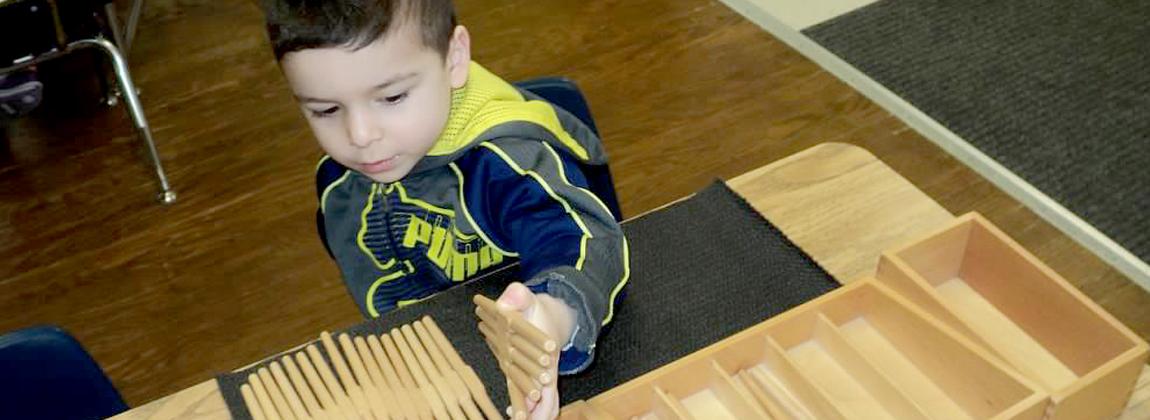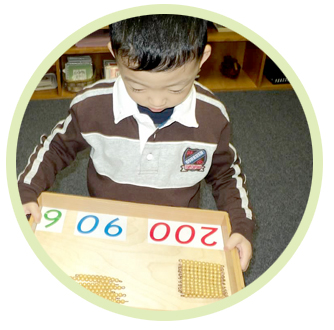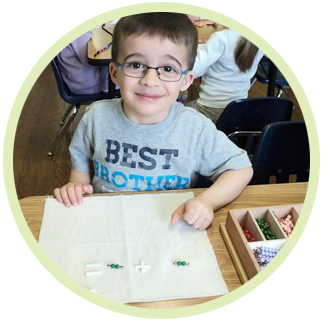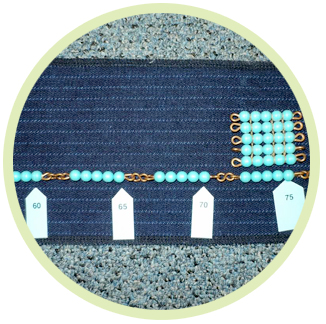DR. MONTESSORI DEMONSTRATED that if children have access to mathematical equipment in their early
years, they can easily and joyfully assimilate many facts and skills of arithmetic. On the other hand, these
same facts and skills may require long hours of drudgery and drill if they are introduced to them later in the
abstract form.
DR. MONTESSORI DESIGNED concrete materials to represent all types of
quantities, after she observed that children who become interested in counting like to touch or move the items
as they enumerate them. By combining this equipment, separating it, sharing it, counting it, and comparing it,
they can demonstrate to themselves the basic operations of mathematics.
CHILDREN IN A MONTESSORI class never sit down to memorize addition
and subtraction facts; they never simply memorize multiplication tables. Rather, they learn these facts by
manipulating concrete materials to perform these operations. Materials such as Number Rods, The Golden Beads and
Fractions lead naturally to abstraction, rather than memorization.
WHEN THE CHILDREN WANT TO DO arithmetic, they are given a sheet of
paper containing simple problems. They work the problems with appropriate materials and record their results.
Similar operations can be performed with a variety of materials. This variety maintains children’s interest
while giving them many opportunities for the necessary repetition. As they commit the addition facts and the
multiplication tables to memory, they gain a real understanding of what each operation means. In a Montessori
classroom there are many materials that can be used for numerization, adding, subtracting, multiplying, and
dividing.



